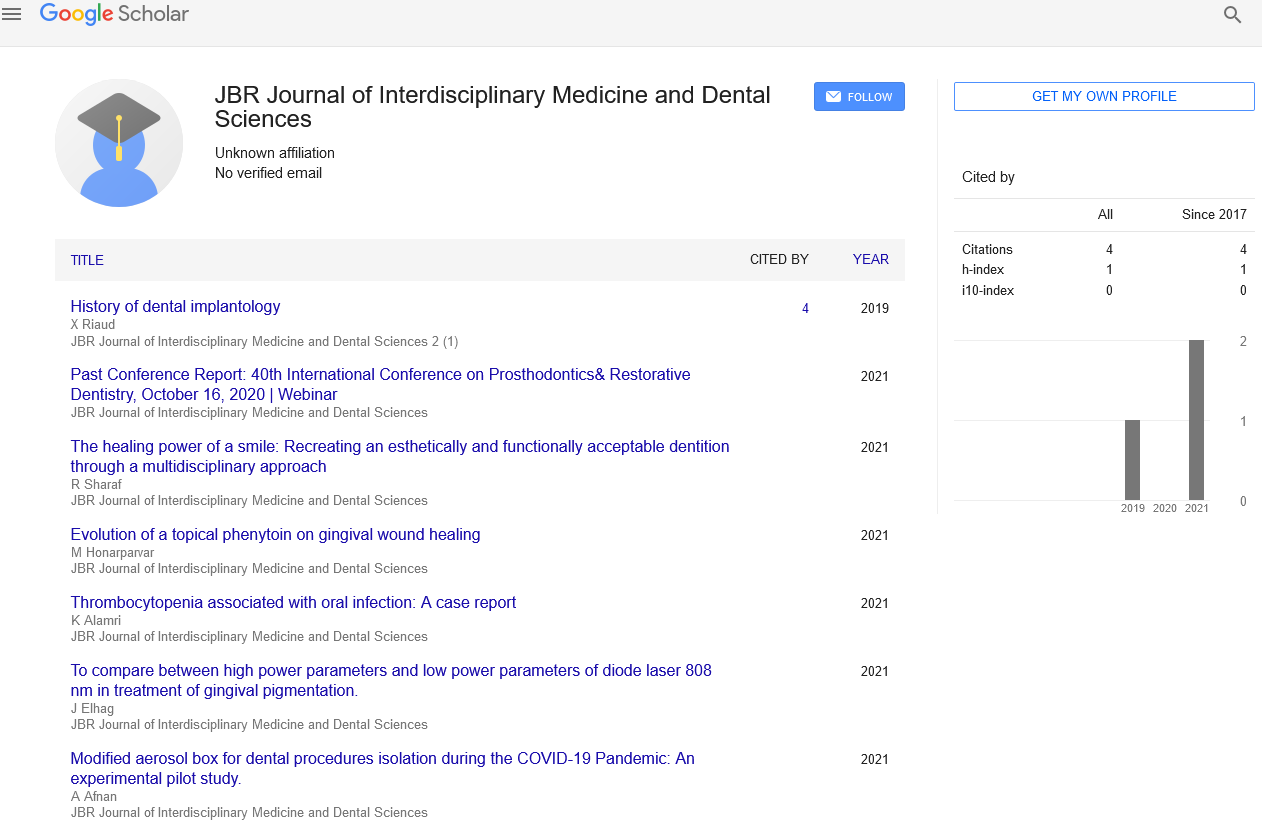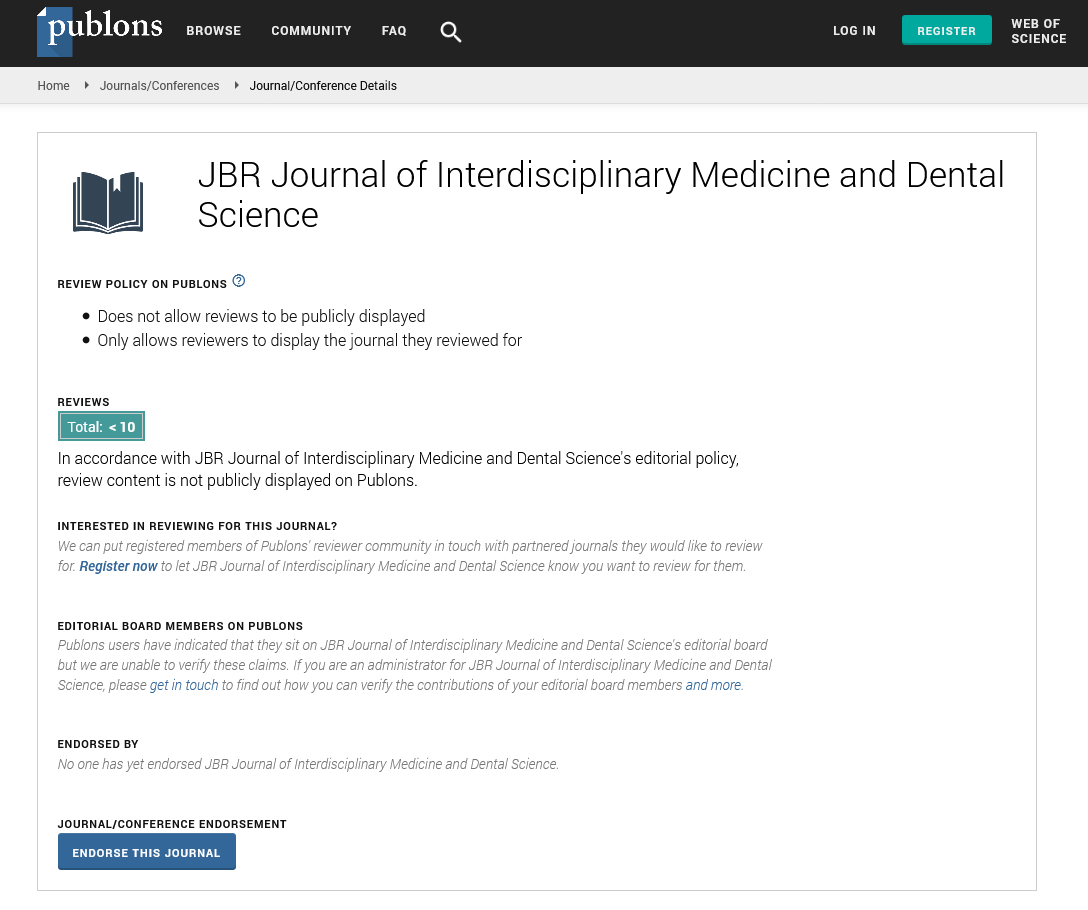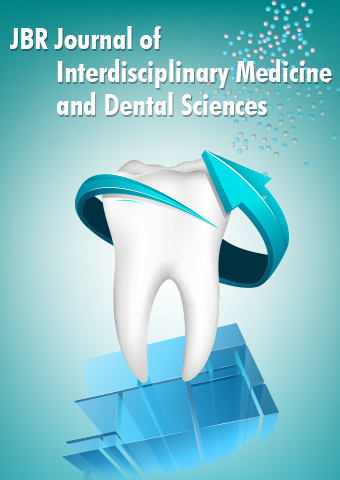Short Communication - JBR Journal of Interdisciplinary Medicine and Dental Sciences (2019) Volume 2, Issue 1
History of dental implantology
Xavier Riaud
National Academy of Dental Surgery, France
Abstract
Keywords
History, Dentistry, Implantology, Teeth
Summary:
History of dental implantology was a long journey from Antiquity till nowadays. In fact, a journey of 7 000 years. Who are the actors ? What about related specialties ? I choose to stop this trip with the Branemark’s discovery of osteointegration, because there were so many implants after. It’s really hard to describe all of these implants.
Pre-history
The skull of Faïd Souar II was discovered by G. Laplace (1954). Faïd was between 18 and 25 years old. It was a prehistoric osteoimplanted dental prosthesis (7000 years B.C.).
Indeed, tooth #15 had been replaced by a dental pseudo-element which was neither a human tooth, nor an animal tooth. It was neither made in ivory, nor in wood but in bone. It was perfectly still, without any trace of bonding (20 mm long, 8 mm long in the bone). It was a small-sized bone such as the bone of a hand, a human foot or a foot of a small mammal in which this tooth was carved, then placed in the mouth.
The Middle Ages:
Abulcasis (936-1013) was an Arab surgeon from Spain. He was caliph Abdel-Rahman III’s surgeon, in Córdoba, the capital city of the Islamic empire of Spain. He wrote some scientific and medical study entitled The Practice. This 1 500-page piece of work was divided into 30 books. It was translated in Latin and published in 1497 in Venise, 1541 in Basel and in 1778 in Oxford. He made numerous dental instruments for dentists who used them to clean the teeth or to extract them. He also made prosthetics with oxe bones. Abulcasis used the method of ligating with a gold or silver thread to replace or to fix teeth when they needed to be transplanted.
Pre-Columbian Era
Era which covered the period from the appearance of the primitive man to the first traces of the European man in America. In 1893, Andrews reported that a black stone was replacing a left lateral incisor from Copan’s excavation (Honduras, 1931). On this subject, M. JEANNERET underlined that this 1000-year-old stone, "set" in the tooth socket without any support, was placed while the carrier was still alive, as it was proved by a significant layer of sediment. This tooth (female adult) can be seen at the Peabody Museum of Harvard University. At that time, the primitive men attempted to model the teeth which were filed in stone.
Renaissance
In 1545, R.W.Hermann, a surgeon from Frankfurt, made one of the first statements on the methods and techniques about implants. In 1557, M. de Cartillo filled a cleft palate with a gold plate. Under the reign of Francis 1st of France and Henry 2nd, Riolon wrote: « Teeth are bones of their own kind ». In 1582, Foret, a Dutch dentist, recommended vigorous dental subluxation equivalent to the reimplantation of natural teeth after dental avulsion to soothe dental pains. In 1560, Ambroise Paré described the use of transplant and reimplantation in one of his treatises. In 1575, Ambroise Paré talked about transplants and quoted: « A princess who had had a tooth pulled, immediately received another from another young woman. The tooth grew and became solid as befo- re ». In 1582, Ambroise Paré (1517-1590) published De plusieurs indispositions qui adviennent aux dents (About many dental discomforts). He was the greatest barber surgeon of Europe. He was successively the official surgeon of Henry II (1559), Francis II (1559), Charles IX (1562) and of Henry III (1575).
19th Century
In 1804, Ch. Bell studied the tissue reactions that various metals could cause. In 1807, when his book Manuel de l’art du dentiste (Handbook on the dentist’s art) was published, Maggiolo described the implantation of a tooth made of 18-carat gold alloy. In 1885, Waisser carried out implantations with porcelain roots. In 1886, Hausman reduced the risk of new fractures or immobilised fractures, thanks to a stainless steel plate and fixing screws. In 1887, Harris implanted porcelain tooth on a rooth made of plaster and covered with lead. In 1889, Frantzen invented celluloid roots. He was followed by Franck in his clinical trials. In 1891, Znamenski implanted porcelain and rubber on a dog. It was a great success. However, what was applicable to dogs, was not for men. In 1891, Hillischer (1850-1926) made platinum and gold implants that he immediately put in a tooth socket after dental avulsion to increase retention. From 1891 to 1894, Lewis, D'Ewardt and Bonwill used platinum and gold.
20th Century
Around the year 1900, following the trend which was characteristic of that period, Berr was trying to implant teeth whose roots were made of precious metals. In 1901, Payne presented a communication proposing the implementation of gold roots on a full prosthesis. In 1906, Hentze had implanted a porcelain root for 3 months and a root made of rubber for 2 years. In 1913, E. Greenfield (US Patent Office Serial n° 478 360 of December 14th 1909) used an artificial root in the shape of a small windowed cage made of platinum-iridium alloy metal lattice. The tooth socket was not dug but the drill hollowed out a circular slit in the middle of which the bone remained undamaged. This set was made up of 4 ladders. The tooth was chiseled in a space which had the shape of a swallow. These experiments lasted 7 years before being presented to the Academy of Stomatology, in Philadelphia. In 1920, Bricke screwed a root made of ivory onto a tooth socket that he drilled himself. In 1928, Meissner "inserted" artificial teeth in holes dug in the sockets. In 1933, Dag indicated the existence of a bridge on the lower maxillary which was made up of 5 elements. Its abutment was a wood screw-shaped root in 22-carat gold. The bridge had been worn for 10 years. The year 1939 saw the use of stainless steels and stellites in dental surgery. The Strock brothers from Boston used vitallium screws (worn during 17 years). In 1943, Alvin E. Strock (1911-1996) and Moses Strock from the Surgical Laboratory of Harvard Medical School were the pioneers of this new method.


